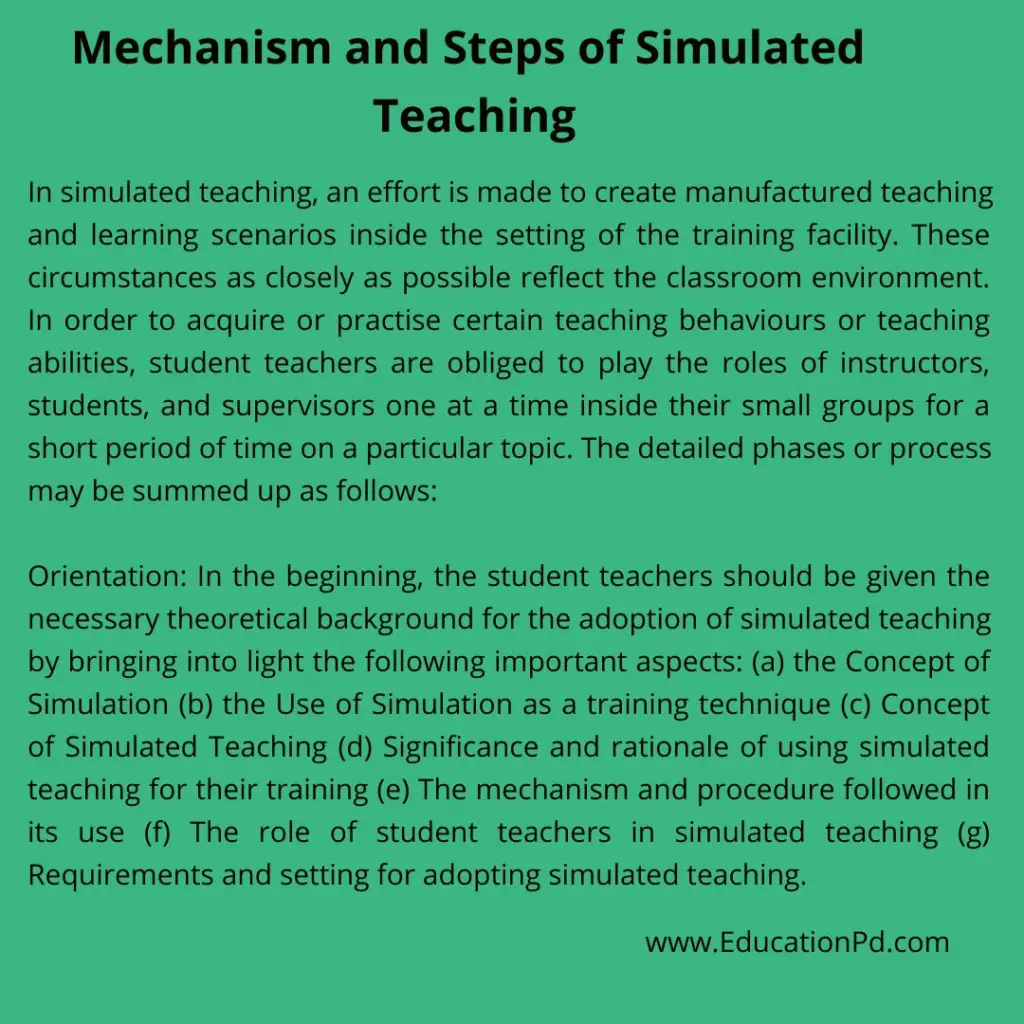Back to: Educational Technology in Education B.ed Notes, M.A Notes, IGNOU Notes
Mechanism and Steps of Simulated Teaching
In simulated teaching, an effort is made to create manufactured teaching and learning scenarios inside the setting of the training facility. These circumstances as closely as possible reflect the classroom environment. In order to acquire or practise certain teaching behaviours or teaching abilities, student teachers are obliged to play the roles of instructors, students, and supervisors one at a time inside their small groups for a short period of time on a particular topic. The detailed phases or process may be summed up as follows:
- Orientation: In the beginning, the student teachers should be given the necessary theoretical background for the adoption of simulated teaching by bringing into light the following important aspects: (a) the Concept of Simulation (b) the Use of Simulation as a training technique (c) Concept of Simulated Teaching (d) Significance and rationale of using simulated teaching for their training (e) The mechanism and procedure followed in its use (f) The role of student teachers in simulated teaching (g) Requirements and setting for adopting simulated teaching.
- Selecting a Teaching Theme: What will be practised through simulated teaching, the precise teaching techniques, etc., should be determined beforehand.
- Lesson on Demonstration: The teacher educator should attempt to provide a good teaching demonstration for the practice of the skill chosen, the subject to be covered, and the technique to be used by the student teachers.
- Formation of Groups: The student instructors are placed into several groups based on their teaching specialities, abilities, and interests, as well as their practised approaches and techniques.
- Assignments and Roles: Role playing is necessary for simulated teaching. Each student teacher in his group is expected to take on the roles of instructor, pupil, and observer.
- Planning: Following that, the instructional timetable is meticulously developed. Now, each trainee who is given the position of a teacher is assisted in choosing a topic that is appropriate for his interests in light of the skills to be practised.
- Execution of the First Practice Session: The student teachers who will assume the roles of the teachers are then asked to present their lessons one at a time to their peers. The observers/supervisors who will assume the roles of the teachers then discuss all the strengths and weaknesses of instruction. After the instruction is given, he receives feedback.
- Follow-up During Subsequent Practice Sessions: What is decided in terms of modifications and alterations in the first session is practised in the second and subsequent sessions, until the objectives of practising one or more teaching skills and acquiring a sufficient understanding of the art of teaching are achieved.
The aforementioned procedures don’t imply any rigidity in how the process of simulating instruction is carried out. One is allowed to use any method and procedure they deem most suitable for their particular set of circumstances.
